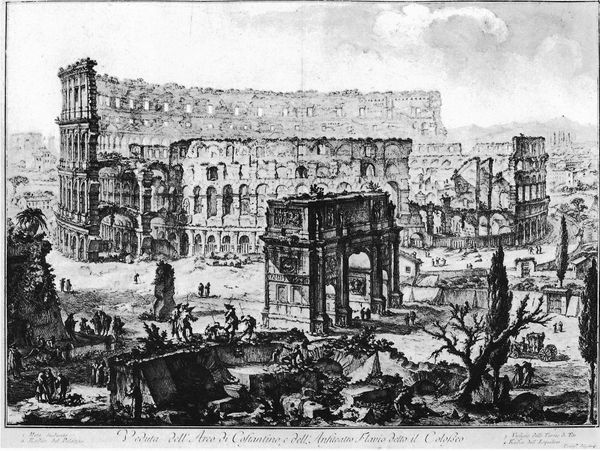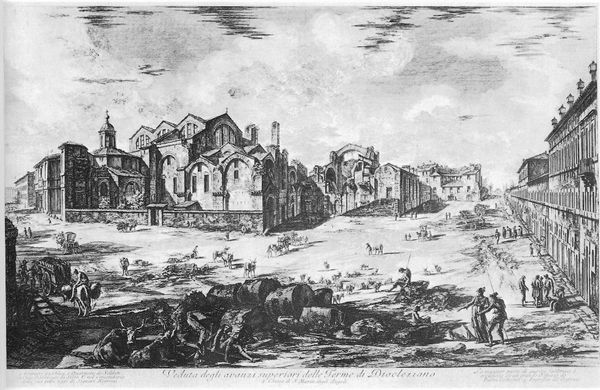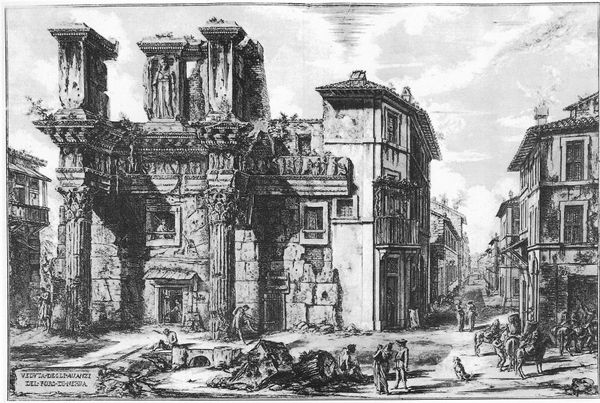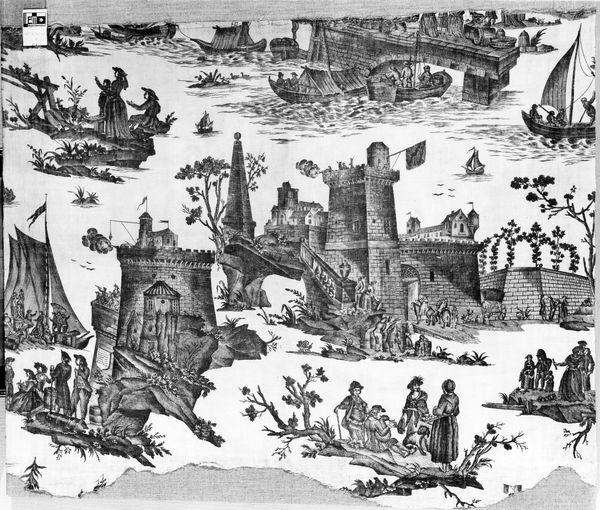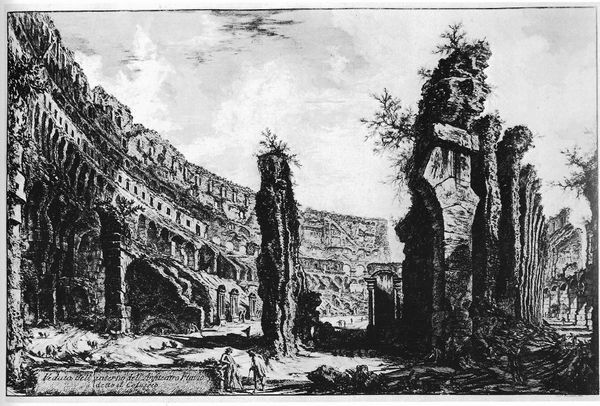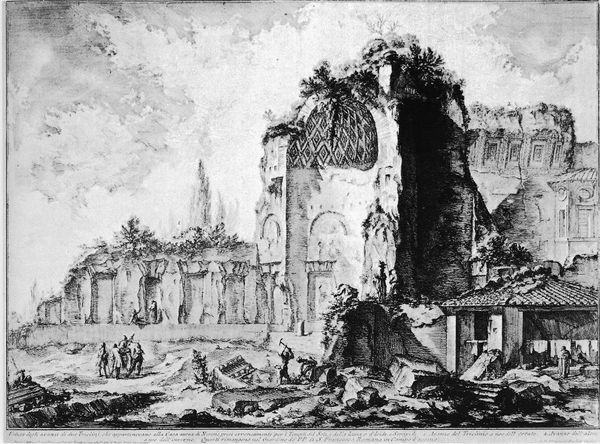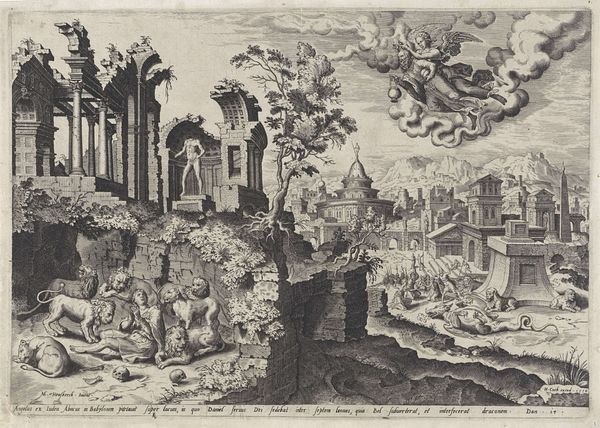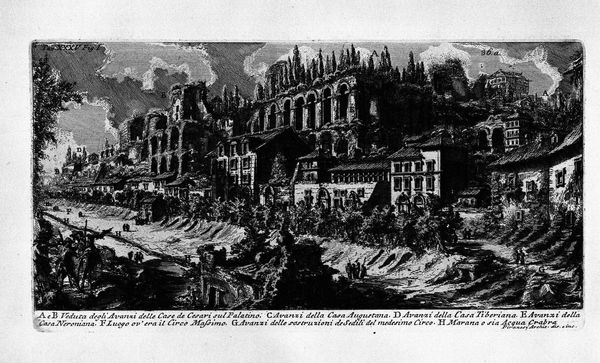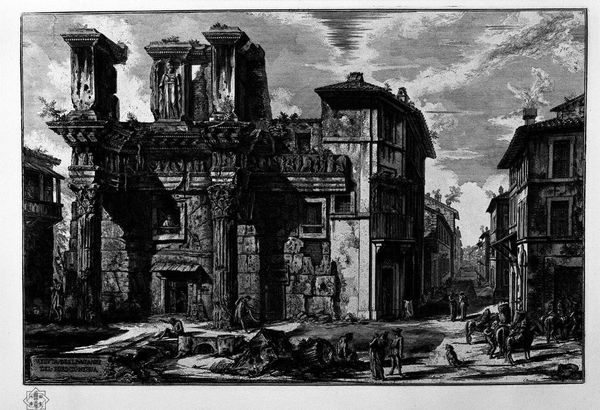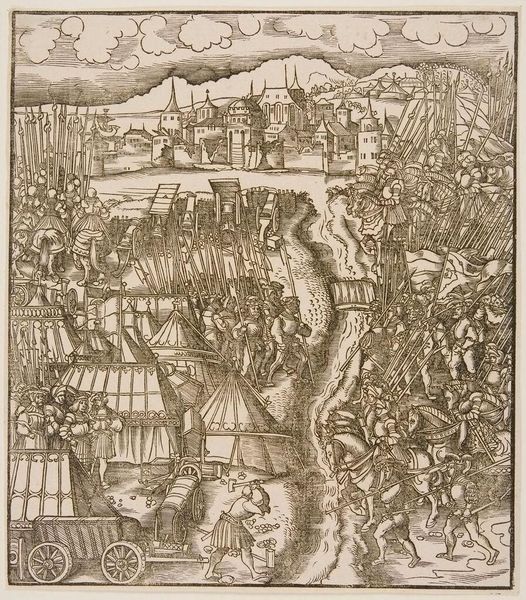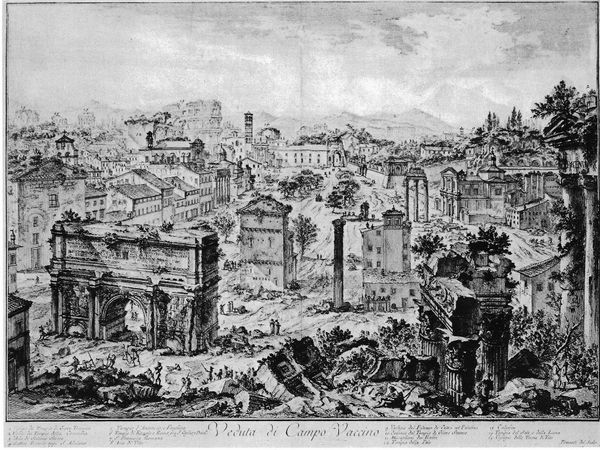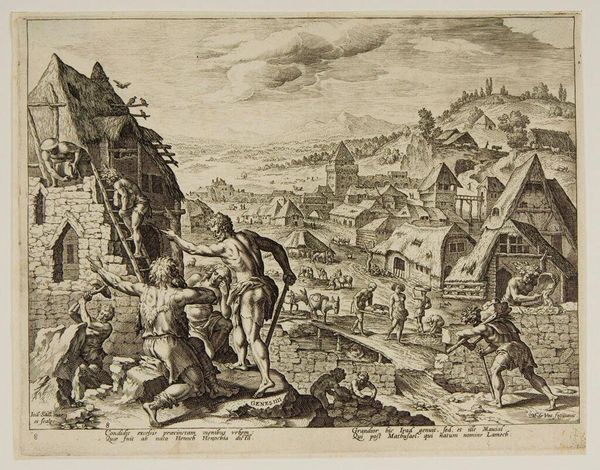
print, etching, engraving, architecture
# print
#
etching
#
landscape
#
romanesque
#
column
#
history-painting
#
engraving
#
architecture
Copyright: Public domain
Editor: Here we have Giovanni Battista Piranesi's "Vedute di Roma," an etching, engraving, and print showcasing Roman ruins. The stark contrast and crumbling architecture evoke a powerful sense of decay and lost grandeur. How do you interpret this work? Curator: I see Piranesi's "Vedute" as more than just picturesque landscapes; they are potent statements about power, empire, and the cyclical nature of history. Consider the context: Rome, once the center of the world, is now reduced to fragments. Piranesi isn't simply documenting these ruins, he is amplifying their scale, creating imposing, almost theatrical compositions. Editor: The human figures seem so small in comparison to the ruins. Curator: Exactly! These figures underscore humanity’s fleeting presence against the backdrop of enduring, albeit ruined, power. Piranesi’s Rome becomes a stage where the dramas of the past are constantly replayed. The "vedute" become tools to analyze power structures that are there even when unseen and challenge our own perception. How do you think contemporary audiences would see this? Editor: I imagine a contemporary audience might focus on the themes of decline and the consequences of unchecked power. Perhaps they'd see it as a reflection on contemporary issues such as climate change, and its devastating impacts. Curator: Precisely. By exaggerating the scale and emphasizing the decay, Piranesi invites us to critically examine not only Rome's past but also the precariousness of all empires, including our own. The grandeur isn't just aesthetic; it is also a historical and political statement. Editor: That reframes the work for me entirely. It’s not just a pretty picture of old buildings, but a commentary on power and transience. Curator: Indeed. Art gives us an arena in which the world may be seen, questioned, and reinterpreted. And in Piranesi, the story of Rome resonates far beyond its physical ruins.
Comments
No comments
Be the first to comment and join the conversation on the ultimate creative platform.
